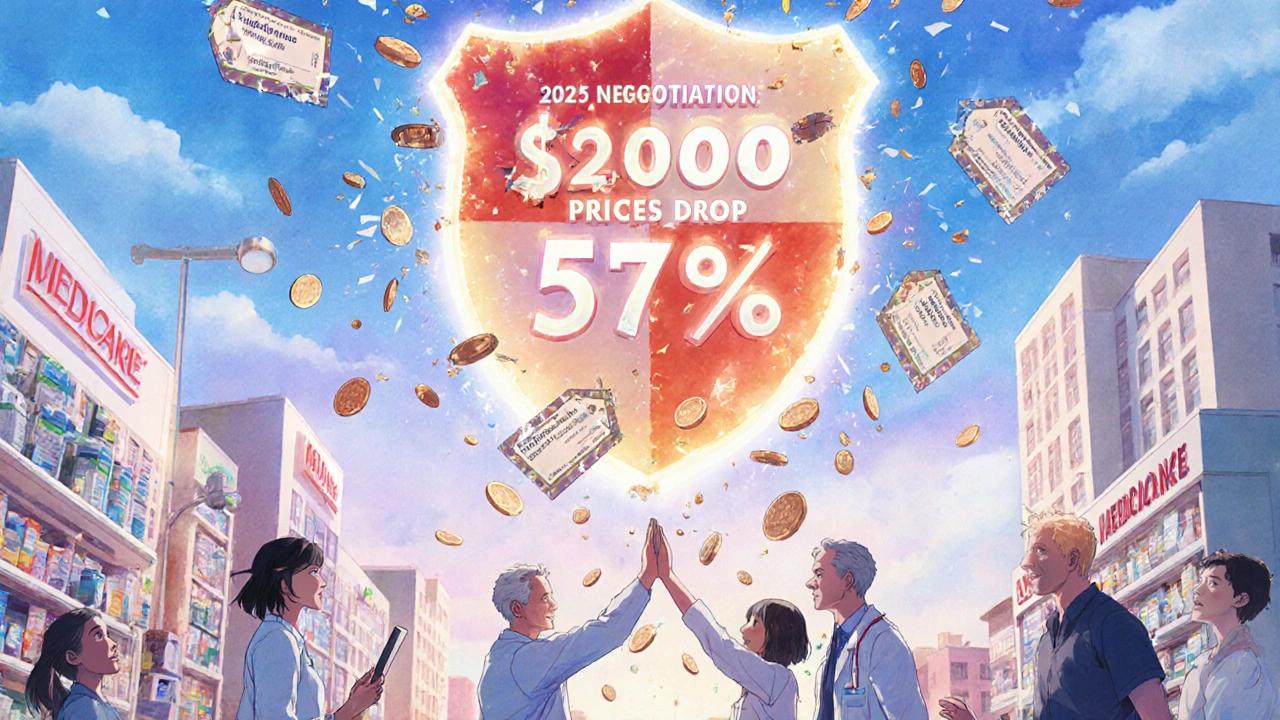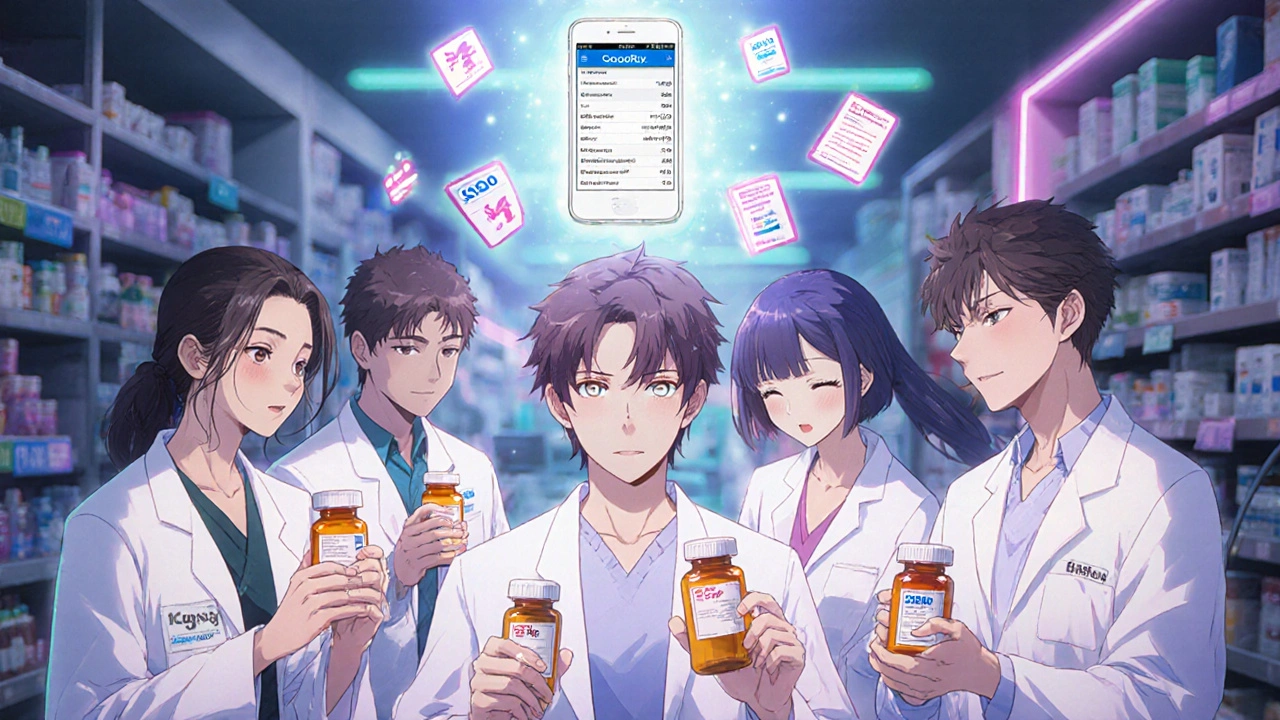Getting your prescription filled shouldn’t feel like a financial gamble. Yet for millions in the U.S., the price tag on a simple pill can be shocking-especially when insurance doesn’t cover it fully, or when the pharmacy says the medication costs are higher than your monthly rent. You’re not alone. Between coupons, generics, and the maze of prior authorizations, the system is designed to confuse more than to help. But understanding how these pieces fit together can save you hundreds-or even thousands-each year.
Why Do Medication Costs Vary So Much?
The price of your medicine isn’t set by your doctor, your pharmacist, or even your insurance company alone. It’s the result of a tangled chain: manufacturers set a list price, pharmacy benefit managers (PBMs) negotiate discounts behind the scenes, insurers decide what they’ll pay, and you’re left with the out-of-pocket bill. The same drug can cost $15 at one pharmacy and $120 at another, even with the same insurance. Why? Because PBMs often keep the difference between what they pay the pharmacy and what the insurer reimburses. That gap is called the "spread," and it’s one reason why you’re sometimes better off paying cash. In 2025, the average cost of a 30-day supply of a branded drug in the U.S. is $147, compared to $38 in Canada and $22 in the U.K. The Inflation Reduction Act of 2022 started changing this. For the first time, Medicare can now negotiate prices for certain high-cost drugs. The first 10 drugs selected-like the diabetes medication Jardiance and the blood thinner Eliquis-will see their prices drop by an average of 57% starting January 2026. That means Medicare beneficiaries will save about $400 a year on these drugs alone.How Generic Drugs Cut Costs Without Cutting Corners
If your doctor prescribes a brand-name drug, ask: "Is there a generic version?" It’s not a compromise-it’s a smarter choice. Generic drugs contain the exact same active ingredients as their brand-name counterparts. They’re just cheaper because they don’t carry the cost of marketing, advertising, or patent protection. By law, the FDA requires generics to be bioequivalent: they work the same way, in the same amount of time, with the same safety profile. Take lisinopril, a common blood pressure pill. The brand-name version, Zestril, can cost $80 for a 30-day supply. The generic? Around $4 at Walmart’s $4 list. Same pill. Same effect. Same side effects. And yet, many patients still get the brand because they don’t know the difference-or their doctor didn’t suggest the alternative. In 2025, nearly 90% of all prescriptions filled in the U.S. were for generics. That’s up from 50% in 2000. The savings? Over $300 billion annually. That’s money staying in your pocket instead of going to pharmaceutical marketing departments. And if you’re on Medicare Part D, you’ll benefit from the new $2,000 annual out-of-pocket cap starting in 2025. Generics help you reach that cap faster-and stay under it.Prescription Coupons: A Lifeline or a Trap?
You’ve seen them: "Save $50 on your next prescription!" These coupons, often offered by drug manufacturers, look like a gift. But they’re not always what they seem. Most coupons only work for brand-name drugs-and only if your insurance doesn’t cover them. That’s because many insurers won’t count manufacturer coupons toward your deductible or out-of-pocket maximum. So you’re paying less now, but you’re still working toward a high cap. Worse, some coupons are designed to lock you into expensive brand-name drugs even when cheaper generics exist. A 2024 study by the Kaiser Family Foundation found that patients using manufacturer coupons for cholesterol meds were 3 times more likely to stick with the brand, even when a generic was available and covered. That means paying $120 a month instead of $8. Use coupons wisely: Only use them if there’s no generic, or if your insurance requires you to pay full price anyway. Websites like GoodRx and SingleCare compare cash prices across pharmacies and often beat coupons. For example, the diabetes drug Ozempic might have a $900 manufacturer coupon, but a cash price of $750 at a local pharmacy-no coupon needed.
Prior Authorization: The Hidden Bureaucratic Hurdle
You’ve got your prescription. You’ve picked the pharmacy. You hand over your insurance card. Then the pharmacist says, "We need to get prior authorization." That means your insurer won’t pay unless they approve the drug first. Why? Because they want to make sure you’ve tried cheaper alternatives first. Prior authorization is common for high-cost drugs-like those for rheumatoid arthritis, cancer, or rare conditions. But it’s also used for common meds like insulin, asthma inhalers, and even some antibiotics. The process can take days or weeks. During that time, you might go without your medication. In 2025, a survey by Patients For Affordable Drugs found that 42% of patients delayed or skipped doses because of prior authorization delays. One woman in Ohio waited six weeks for approval of her thyroid medication. She ran out, felt dizzy, and ended up in the ER. Her total bill: $2,800. Her original monthly drug cost: $45. You can fight back. Ask your doctor to submit the prior auth request immediately. Call your insurer to check the status. If it’s denied, ask for a written explanation-and appeal. Many denials are overturned on appeal. And if your drug is on Medicare’s newly negotiated list, prior authorization requirements are being phased out for those drugs starting in 2026.What You Can Do Right Now to Lower Your Costs
You don’t need to wait for policy changes to save money. Here’s what works today:- Ask for the generic every time-even if you’ve been on the brand for years.
- Compare cash prices with GoodRx or SingleCare before using a coupon.
- Use mail-order pharmacies for maintenance meds. Many insurers offer 90-day supplies at lower copays.
- Check for patient assistance programs from drugmakers. Many offer free or low-cost meds to low-income patients.
- Ask your doctor about therapeutic alternatives. Sometimes a different drug in the same class works just as well-and costs less.
- Keep a list of your meds and their prices. If you notice a sudden spike, call your insurer. It might be a PBM change.

The Bigger Picture: Why This Matters Beyond Your Wallet
Medication costs aren’t just about money-they’re about health. When people skip doses because they can’t afford their pills, their conditions worsen. Diabetes leads to amputations. High blood pressure leads to strokes. Asthma leads to ER visits. The CDC estimates that non-adherence due to cost costs the U.S. healthcare system $300 billion a year in avoidable hospitalizations and complications. The good news? Change is happening. The Inflation Reduction Act is forcing transparency. The GENEROUS Model for Medicaid is pushing manufacturers to align prices with other countries. States like Minnesota are using Medicare’s negotiated prices as a ceiling for what Medicaid pays. And more pharmacies are offering flat-rate generics-$4 for 30 days, no insurance needed. You’re not powerless. You have choices. You have tools. And you have the right to ask questions. The system is broken, but you don’t have to be part of the problem. Start with one simple step: next time you get a prescription, ask, "Is there a cheaper way?"Can I use a coupon and my insurance together?
Usually, no. Most insurance plans don’t let you apply manufacturer coupons to your copay because they don’t count toward your deductible or out-of-pocket maximum. If you’re paying cash, the coupon can help. But if you’re using insurance, the coupon may be rejected. Always check with your pharmacist before using one.
Are generic drugs as safe as brand-name drugs?
Yes. The FDA requires generic drugs to have the same active ingredient, strength, dosage form, and route of administration as the brand-name version. They must also be bioequivalent, meaning they work the same way in your body. The only differences are in inactive ingredients like fillers or dyes-rarely a concern for most people.
Why does my drug cost more at one pharmacy than another?
Pharmacies get different prices from pharmacy benefit managers (PBMs). Some pharmacies get better deals, especially independent ones. Chain pharmacies may charge more to cover their overhead or because their PBM doesn’t negotiate well. Always compare cash prices using apps like GoodRx-even if you have insurance.
What if my prior authorization is denied?
You can appeal. Ask your doctor to write a letter explaining why the alternative drugs won’t work for you. Include medical records, test results, or past failures with other meds. Many denials are reversed on appeal-especially if you’re persistent. Don’t give up after the first "no."
Will Medicare drug price negotiations affect me if I’m not on Medicare?
Yes, indirectly. When Medicare negotiates lower prices, manufacturers often extend those same prices to commercial insurers and Medicaid to avoid complexity. Some states are already using Medicare’s negotiated prices as a benchmark. Over time, this could bring down prices for everyone-even those with private insurance.
How can I find out if my drug is part of Medicare’s negotiation list?
The first 10 drugs selected were announced in August 2024. You can check the full list on the Centers for Medicare & Medicaid Services (CMS) website. The next 15 drugs will be announced in 2026, followed by 15 more in 2027. If your drug is on the list, you’ll see lower prices starting in January 2026 if you’re on Medicare Part D.
